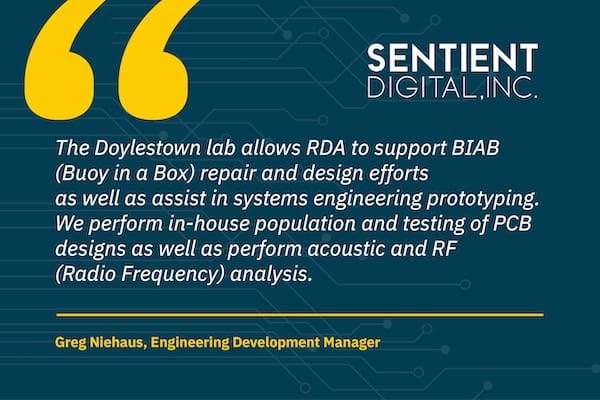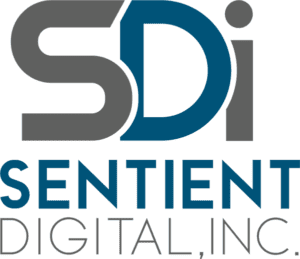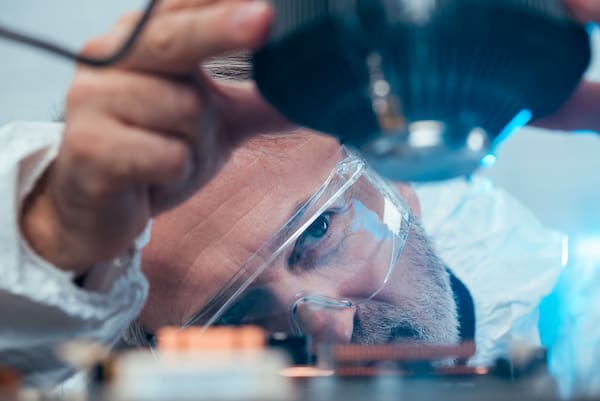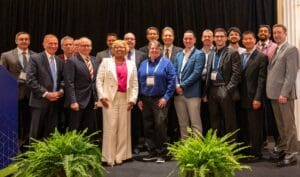As custom technology solutions providers, Sentient Digital, Inc. and its subsidiary RDA know that fostering a culture of innovation is critical for technological development in the service of its clients’ objectives. RDA Engineering Development Manager Greg Niehaus explains how the Doylestown lab runs on a culture of innovation that allows it to push technology limits and adapt and respond to its clients’ evolving needs.
Defining a Culture of Innovation
What is a culture of innovation? A culture of innovation is a place where collaborative ingenuity thrives. It fosters an environment where diverse perspectives converge to solve complex challenges with agility and foresight. This culture encourages taking calculated risks, cultivating a space where novel ideas are nurtured, tested, and refined. Individuals’ ideas become team efforts that create successful projects. Embracing new technological capabilities and cross-team approaches, it ensures a constant pulse of adaptability and forward thinking. This allows partnerships between employees with differing strengths to flourish, and has the potential to speed up the creative problem-solving process. The resulting actionable solutions can redefine industry standards, enhance national security, and drive sustained success.
How Does Fostering a Culture of Innovation Facilitate R&D Achievement?
Shaping your organizational culture to focus on innovation holds a lot of potential for your research and development (R&D) endeavors in particular. Blending values, practices, and attitudes to create an environment of systematic exploration will pay dividends in terms of the potential for achievement in this arena. Although organizational culture cannot be changed overnight, the effort required to create such a culture has the power to revolutionize your business and drive sustained success.

The role of collaboration cannot be overstated when it comes to innovation. The reason is that while individuals may have new ideas, or lack them, a team together can inspire each other to continually develop and refine ideas. If the problem is a lack of ideas, working together can help people to think through a problem to come up with new approaches. However, if the problem is that one person has too many ideas or that their ideas are too extreme compared to current organizational practices, a team can help to reign in the ideas and hone them into something that can be more useful. Finally, bringing ideas to a team and working on them together reinforces that innovation is within the cultural makeup of the organization, including employees at all levels, rather than merely the brainchild of leadership.

Risk-taking sounds scary, but forms an integral part of this type of culture. In order to test whether new ideas work, an element of risk is involved. The key is in the collaboration, which allows other team members to build off of an initial suggestion, and create a plan that is more likely to succeed, as well as contingency plans for when an idea does not work out as expected. Workplace teams, particularly those composed of scientists, engineers, and other tech professionals, will understand that not all experiments yield success. However, the learning gained from these perceived “failures” serves to enhance future approaches to a problem. This attitude of acceptance towards setbacks brings about a spirit of resilience, emboldening researchers to venture into previously unexplored domains without fearing repercussions for their career.
Flexibility and adaptability are important components of a culture of innovation as they allow employees to respond in real time to indications that an idea is not working or that a plan needs to change. As circumstances develop, opportunities to optimize will appear. As the R&D landscape is ever-evolving, and what worked yesterday might not suffice tomorrow. This approach welcomes the continuous learning needed to remain at the forefront of discovery in the R&D field.
Embracing intellectual curiosity, promoting collaboration between team members and across teams and departments, and taking smart risks tempered by the force of multiple minds creating and adapting a plan together serve as incubators for scientific and engineering achievements. This creative environment, while operating within the bounds of compliance and policy, drives forward an organization’s ability to move past limitations of doing things the way they have always been done. While this can be valuable in any organization, this is especially important in scientific and technical fields, such as when working in laboratory environments. Both those who work in the lab and those who lead the organization must work together in support of this culture in order for it to work. When our values as an organization align with the emphasis you want to place on innovation, your people’s potential for technical achievement will be maximized.
The Culture of Sentient Digital and RDA Emphasizes the Possibilities of Innovation
Fostering a culture of innovation is a critical objective of Sentient Digital and RDA. Leveraging their organizational values, they have created a culture that seeks and develops new ideas. These values are expressed in the C.R.E.E.D., which stands for Caring, Resiliency, Eager, Energy, and Dedication. These values align perfectly with a culture of innovation. Sentient Digital and RDA employees bring eagerness and energy to their work to turn their ideas into reality. The value of caring means that people come first, but that can be shown in many ways, including listening to and supporting their ideas. The dedication that Sentient Digital and RDA employees show in their work means that ideas are supported and shaped into their most useful applications for clients’ objectives, and resilience means that even when there are setbacks, adaptation allows for taking new approaches to problem solving. Innovation thrives in these values and is reflected in the work of this organization, its people, and their work environment.

How The Doylestown Lab Exemplifies Innovation
To understand how a physical location can facilitate an organization’s culture of innovation, the RDA lab located in Doylestown, Pennsylvania provides a clearcut example.
Background on The Lab
RDA’s lab in Doylestown, Pennsylvania further builds on the culture of innovation through its design and environment. The facility boasts a high-quality solder station established on a new test bench, features a state-of-the-art microscope, and provides printed circuit board (PCB) cleaning tools. This allows us to replace board parts in house, minimizes risk of contamination, and improves the quality of the products RDA releases. Greg Niehaus explained how the lab facilitates collaboration with the other members of his team, noting that, “With the lab improvements and better-defined workstations for soldering and repair, we are able to better transition efforts to newer team members and teach valuable hands-on lab skills.”
The Doylestown lab blends cutting-edge design with practical expertise. Engineers and military personnel collaborate to develop and refine the technology that keeps naval vessels operating efficiently and safely. The lab’s heart is the people who work here with a passion for using their scientific capabilities to further warfighters’ missions. Here, the present and future of naval defense take shape.
Niehaus explained, “The Doylestown lab allows RDA to support BIAB (Buoy in a Box) repair and design efforts as well as assist in systems engineering prototyping. We perform in-house population and testing of PCB designs as well as perform acoustic and RF (Radio Frequency) analysis.” The exciting opportunities afforded by this facility exemplifies RDA’s continuing focus on innovation.

How The Doylestown Lab Is Innovating
Niehaus also discussed how recent updates to the lab in Doylestown have assisted his team in fostering innovation in this environment.
“RDA Doylestown has updated the equipment in their lab to better assist with in-house development. We have increased capabilities regarding repairing BIABs, generating test setups, and have significantly improved in-house PCB design,” he said.
The Doylestown Lab allows RDA to continue to support BIAB repair and design efforts as well as assist in potential prototyping, putting RDA engineers at the forefront of technological development.
Fostering a Culture of Innovation in Your Own Organization
When you want to build a culture of innovation, the exact steps to take will depend on where your organization currently stands on measures such as how much employee feedback you solicit and to what extent new ideas are already appreciated and implemented. Once you make that evaluation, here are some ideas for how to get started. Firstly, the leaders of your organization can make a deliberate effort to champion and visibly support innovative ideas, creating a safe space for experimentation and risk-taking. One way to do this is by using employee feedback tools at the organization and team levels. It’s not enough to just ask the questions, however; encouraging open communication and active listening among teams ensures diverse perspectives will be appreciated. Going over the results of surveys in company-wide or team-wide meetings can show employees that their ideas are valued and help them feel comfortable putting a new idea forward the next time they have one.
Dedicated time and resources for brainstorming and idea generation sessions are a critical part of fostering a culture of innovation. Recognizing and celebrating both small and large innovations reinforces this culture. Additionally, promoting cross-functional collaboration and emphasizing continuous learning underscores the importance of innovation at all levels of the organization. Investing in ongoing training and professional development for your employees, keeping their knowledge on the cutting edge of your industry, is another way to demonstrate your commitment to innovation. One final critical element to making employees feel comfortable proposing new approaches to problems and testing out theories is accepting that not every idea will work, and encouraging learning from mistakes along the way.
Want to Be Part of Fostering a Culture of Innovation with Sentient Digital and RDA?
If you are looking for an employer that prioritizes innovation, Sentient Digital and RDA could be the perfect fit for you! Find out if you are a match for what we are looking for by visiting our Current Job Postings. If you would like to experience our innovation in your organization, contact us to learn more about working with us and what we can do for you.



